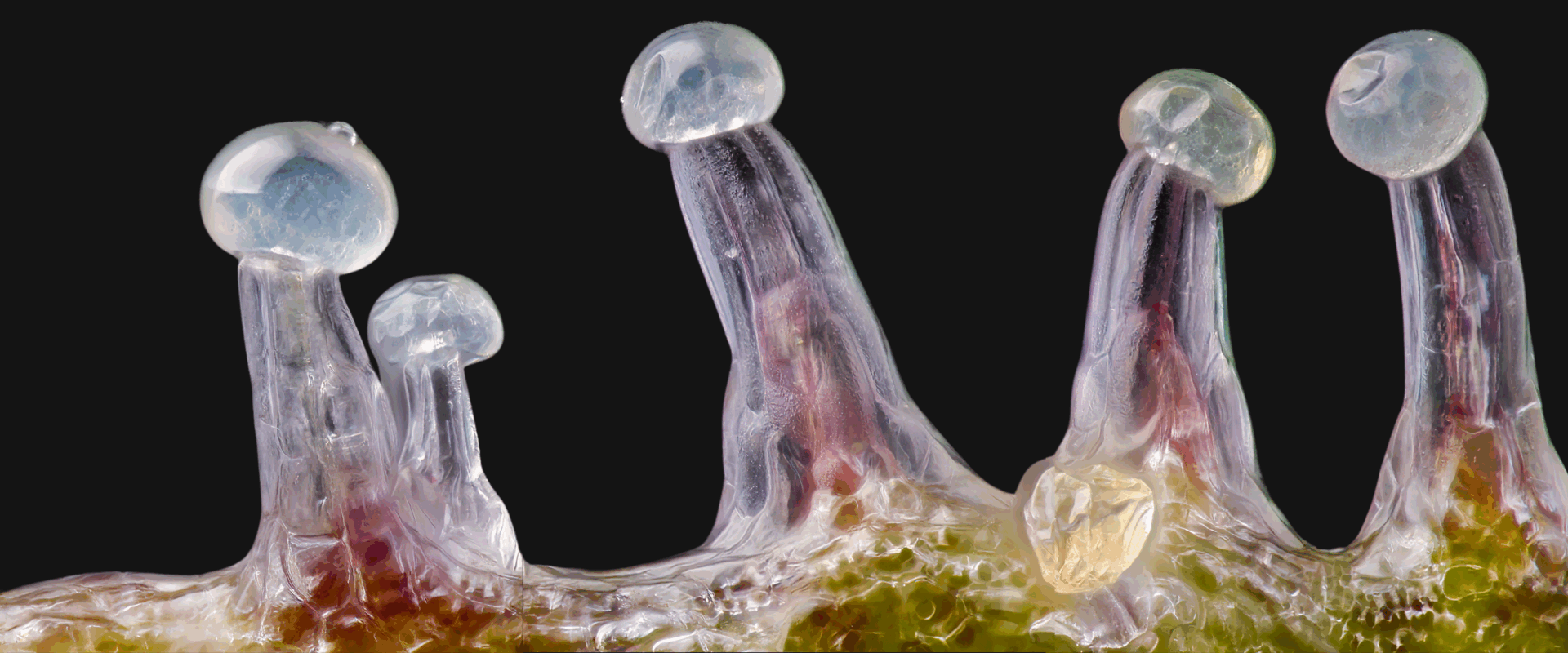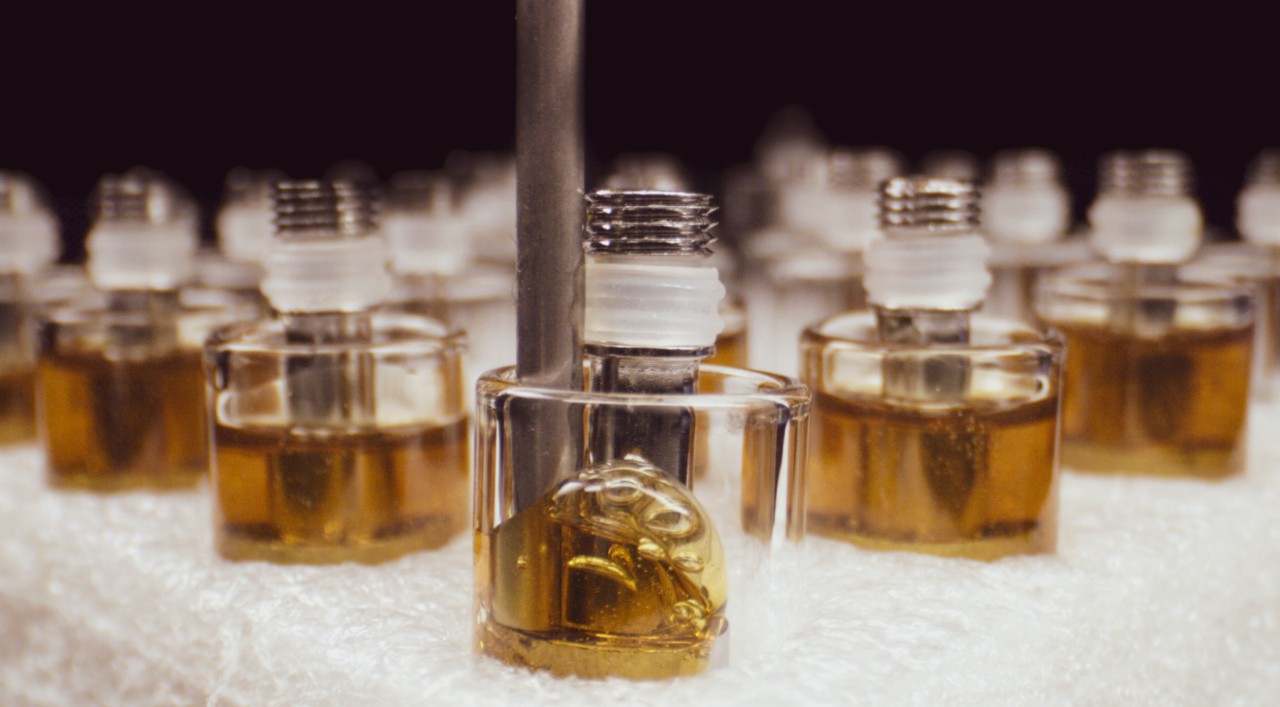Trichomes are the plant’s most important storytellers. These microscopic glands produce and store cannabinoids and terpenes, forming the chemical signature that defines each cultivar’s character [1]. Cannabis carries three principal trichome types: bulbous, capitate-sessile, and capitate-stalked. Stalked glands dominate resin production, and drive the potency and aroma associated with high-quality flower [2].
Genetics set the baseline for trichome potential, but environment shapes the outcome. Light intensity, UV exposure, nutrient balance, and measured stress all influence how densely a plant coats itself in resin [3]. These glands also act as a functional armor. Their compounds deter insects and herbivores, helping to buffer the plant from ultraviolet damage [4]. Trichomes progress through clear, cloudy, and amber stages as cannabinoids and terpenes mature or degrade. Growers monitor these shifts because they offer a real-time view into chemical readiness. While not absolute, this method remains a reliable way to time harvest for desired effects [2][3].
Trichome density varies across plant structures. Calyxes hold the greatest concentration, while leaves and male plants produce far fewer glands [2]. For cultivators and extractors, this distribution can affect yield and terpene expression. Heat, oxygen, friction, and time can break the fragile glands apart, allowing volatile terpenes to evaporate. This fragility is why flash-freezing fresh flower has become the standard for live resin. Preserving the integrity of the trichome head preserves the flavor it contains [5].
Under magnification, a trichome reveals a complex internal system of secretory cells and enzyme activity. This microscopic architecture determines how resin behaves during extraction and finishing. Sauce, diamonds, wax, and shatter all trace back to variations in the original trichome chemistry and how it is processed [6].
For the cannabis connoisseur, a close look with a simple loupe can tell you more about quality than most marketing claims. Healthy, abundant, unbroken trichomes reflect both proper cultivation and careful handling from harvest to jar [3][1].
Sources
[1] Leafly. Trichome. https://www.leafly.com/learn/cannabis-glossary/trichome
[2] GrowWeedEasy. Trichomes: The Complete Guide. https://www.growweedeasy.com/trichomes
[3] Royal Queen Seeds. The role of trichomes in cannabis. https://www.royalqueenseeds.com/blog-the-role-of-trichomes-in-cannabis-n613
[4] Encyclopaedia Britannica. Trichome. https://www.britannica.com/science/trichome
[5] Leafly. What is live resin. https://www.leafly.com/news/cannabis-innovation/what-is-live-resin
[6] Project CBD. How concentrates take shape. https://www.projectcbd.org/science/how-concentrates-are-made

